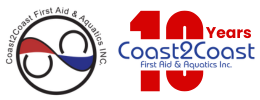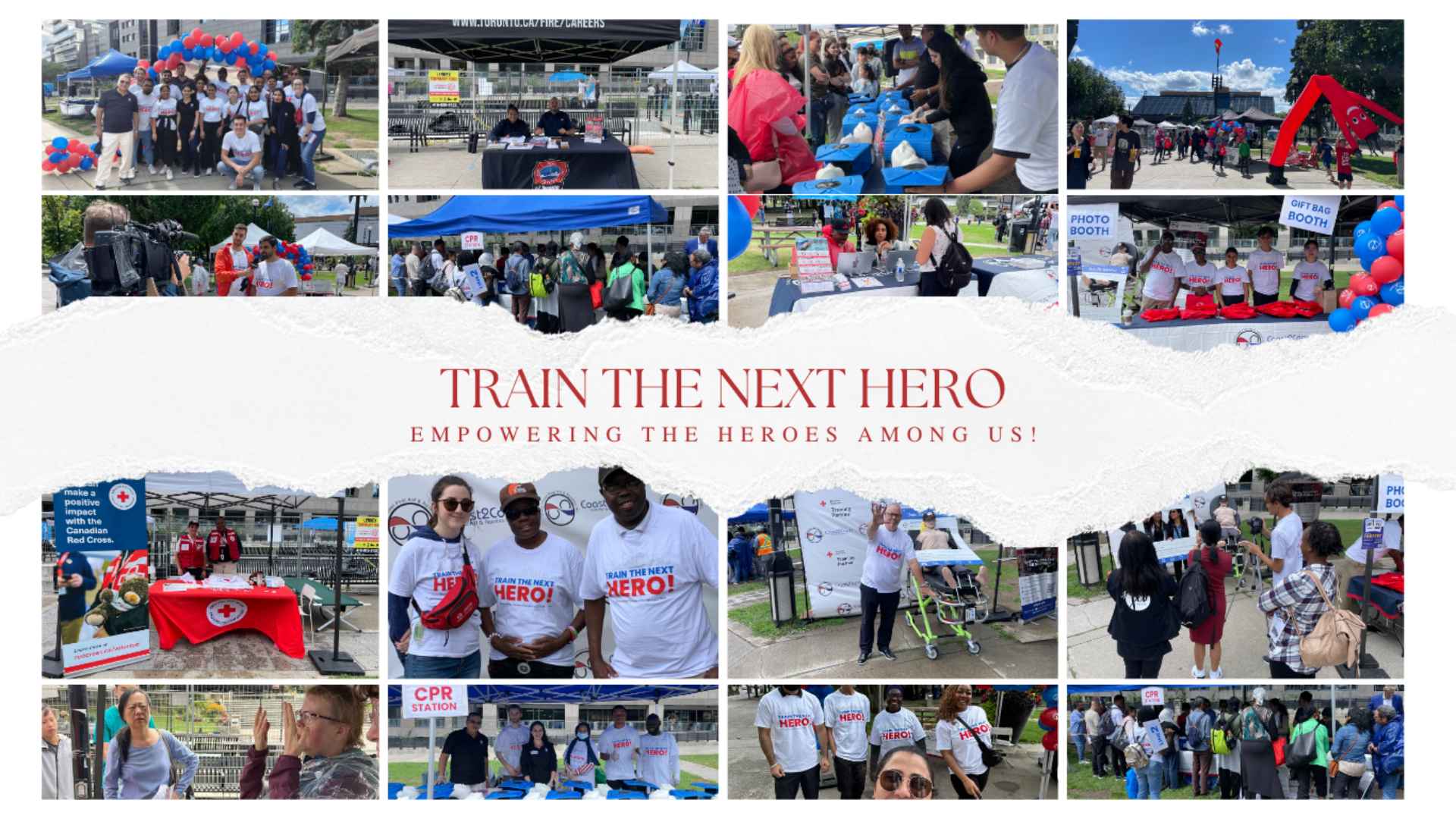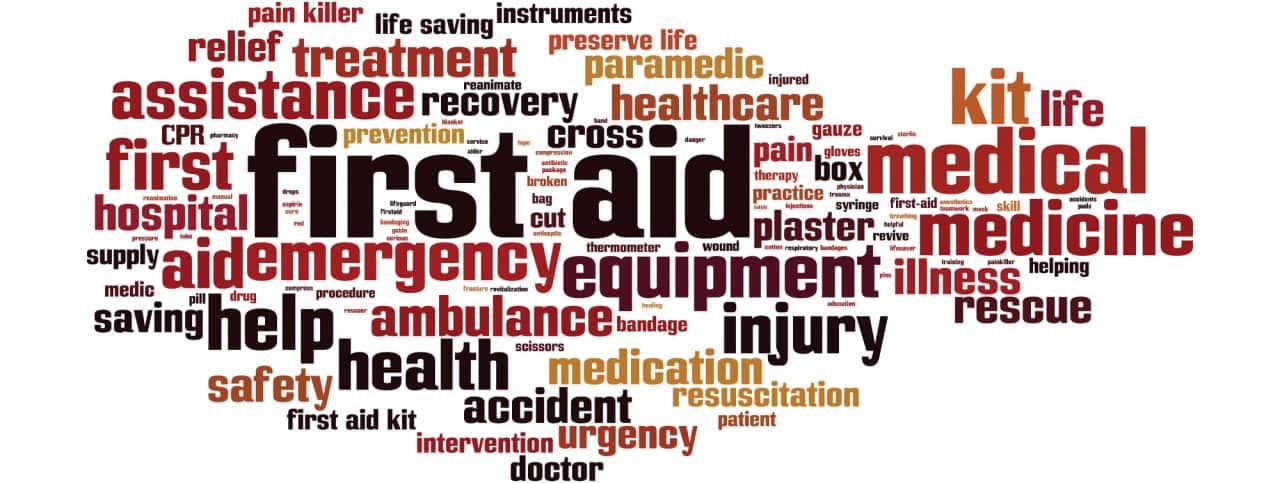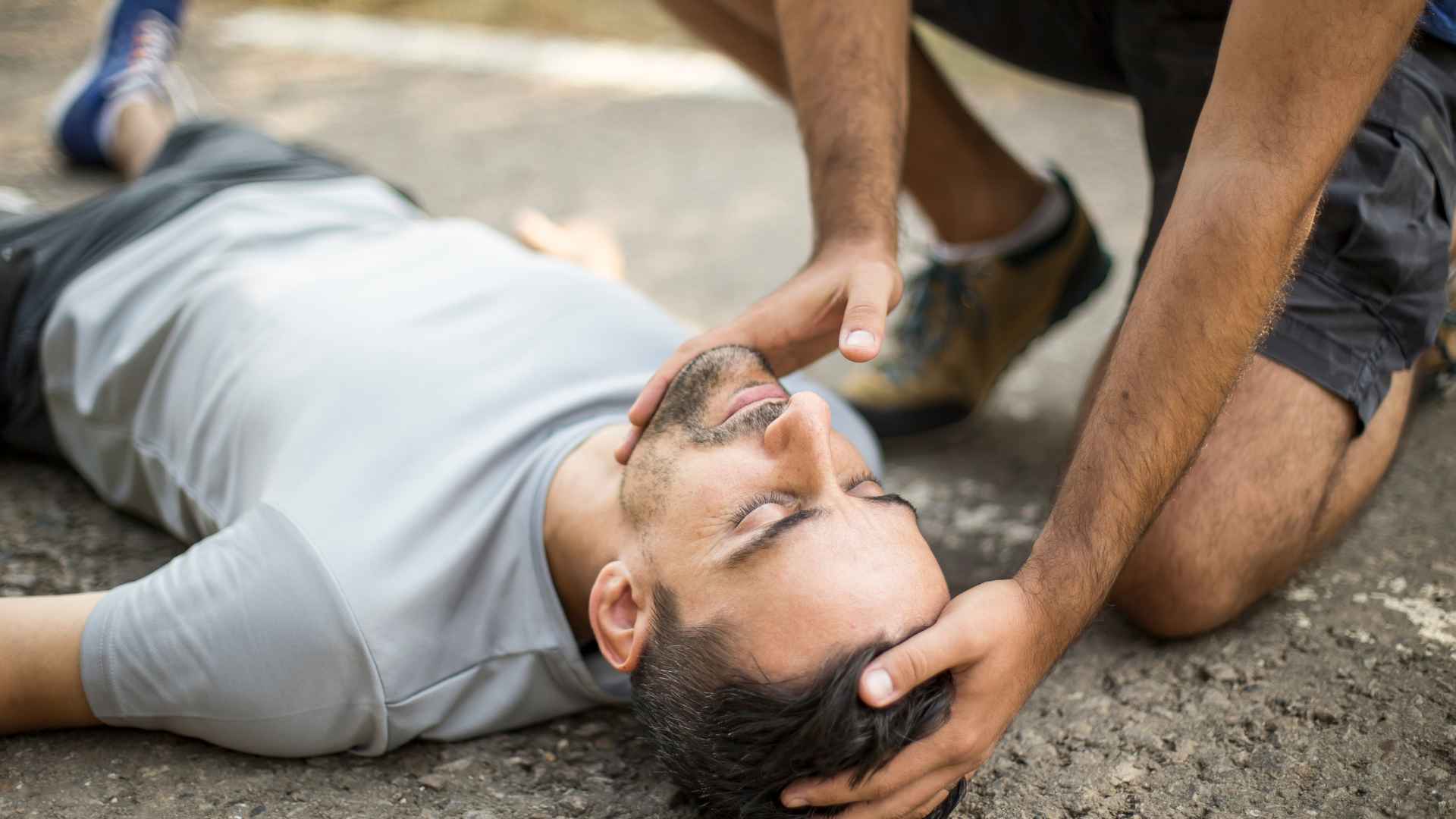At Coast2Coast First Aid & Aquatics, we’re passionate about empowering communities with the life-saving skills they need to make a difference. Our annual “Train the Next Hero!” workshop is a testament to this commitment. On August 11, 2024, Mel Lastman Square transformed into a bustling hub of heroism as we hosted the fourth installment of this beloved event.
Continue readingEmergency First Aid Help for Victims of Mass Shootings
This past shooting on Danforth Avenue in Greektown, Toronto has us concerned and worried for the safety and protection of our city.
We mourn for the families and loved ones for those who lost someone and hope and pray for a speedy and healthy recovery from those who have been injured in the shooting. The Greater Toronto Area (GTA) has had over 200 shootings in 2018, with 26 fatalities as a result. It is unfortunate that we now have to become aware of our surroundings at all times, but we must be prepared for future shootings and massacres to happen again.
Coast2Coast provides the community of GTA with Emergency and Standard First Aid courses to equip and strengthen our communities with First-Aid trained members. Through various news outlets, we find that many first aid trained people have helped out several victims and have saved many lives because of their proficiency and courage. However, there are still far too many people who succumb to death or face life-altering injuries that could have been prevented or helped with first aid assistance.
Many bystanders who are in the area of a mass shooting often flee the scene for their own safety before assessing the area to see if they could provide first aid to any victims. In these horrific situations, emergency medical responders are often delayed, depending on how large the area affected is, and how many people are needed to be treated. The most important thing in preserving one’s life during a mass shooting is to stop the bleeding.
To begin to help, always call 911 when you see someone bleeding from a shooting. Then assess the area to make sure the shooter(s) have left the area, and that there are no hazards or objects around you that can injure you and the person in need.
Find out if the victim is responsive, and explain your steps of aid to you and other bystanders loudly and clearly. If they are responsive, ask consent to remove or cut away the clothing to calculate where the wound is, and where to put the dressing and/or tourniquet. If the victim is unresponsive, let the bystanders know what you are doing and explain why you are removing the clothing for assessment and first aid.
For those who lose blood at a very fast rate often experience shock, where the body shuts off all functions, which concludes with the brain turning off and resulting in death. This is why it is imperative to stop the bleeding FAST. If the weather is cold or freezing, try to keep the person in need with warm garments and/or blankets where there is no injury or wound. As bullets can infiltrate bones and muscles, keep their movements to a minimum, as the location of the bullet often go unseen unless assessed by an emergency medical responder or a medical professional.
With your emergency first aid training, begin the dressings with an available first aid kit, or available garments that can be wrapped around the wound. If extreme bleeding continues to be an issue, apply a tourniquet (if no first aid kit is available, use a shoelace, belt, scarves, etc.) that is two to three inches above the wound. If bleeding goes through the bandages, DO NOT take them off. Just continue to put dressings over the old ones and make sure the tourniquet is tight and secure.
Once the patient has been dressed with bandages, keep them calm until emergency medical responders relieve you of your duty. Make sure they are as comfortable as possible, as they might still be going through shock and trauma of the shooting. Most importantly, make sure the location is safe for you to be in, and stop any aiding if the bearings become unsafe for you and other bystanders.
Stay with them until emergency medical responders (EMR) take over, as they may have questions they want to ask you about the shooting, the victim, how long you have been there, etc. Along with the EMR staff, report the incident to the police on the scene, and describe the wound, and if you have any knowledge of who the shooter was or what they looked like, wore, spoke, etc.
Helping a victim itself is a traumatic event in itself; one can feel anxiety, spirts of depression, and confusion. It is important during this time to surround yourself with positive and loving people, such as family members, romantic partners, and friends, who are here for you and can talk to you about what happened. If signs of anxiety, depression, and panic continue and/or worsen, it is important to seek external help. Asking for help is a big sign of strength, and can help you overcome the trauma you have went through for your courageous gesture.
At Coast2Coast, we pride ourselves in training the GTA with credible Canadian Red Cross classes for unfortunate situations such as The Danforth shooting. We cannot prevent massacres and immoral incidents from happening in our community; instead, we can be equipped and educated for these events to continue to help save lives when these tragedies occur. Call or register online to sign up for one of our First Aid & CPR/AED classes today and be the lifesaver your community needs today!
Register for CPR or First Aid Training


3 First Aid CPR Training Essentials
Ever since it was invented, CPR (short for cardiopulmonary resuscitation) has been evolving and reaching higher and higher levels of efficiency at preventing death in the case of sudden cardiac arrest.
Continue readingCan First Aid and CPR Save Lives?
One of the things people frequently ask is what are the chances anyone will actually need to use the skills taught in a Red Cross first aid and CPR course, in their real life?
The first thing we have to say is that regardless of how minuscule the chances are that you will be called to save a life in an emergency, you will wish for dear God that you knew how to do it.
Second, medical emergencies are not as infrequent as you might think. The number of people that have had to deal with injuries of varying degrees in their everyday lives is actually pretty mind blowing. Especially considering that Canada is a seemingly safe country.
There are natural disasters such as the all too recent fire that raged across Fort McMurray, devastating entire neighborhoods. Summer had its share of drownings too. The average is approximately just below a 100 drownings a year in Ontario alone. How many of those people could have been saved if someone knew CPR when they were fished out of the water?
Bystander CPR and your Chances of Survival
Here’s another statistic, from the States. About 300,000 a year suffer a sudden cardiac arrest, the vast majority of which occur outside the reach of medical professionals. Sadly, the survival rate is only 8%, almost all of which are a result of the victim receiving CPR from a bystander, keeping them alive until the ambulance arrived. Only a third out of the 300,000 cases received CPR, saving a good portion of the victims.
Almost not a single one of those who didn’t get CPR ended up surviving the ordeal. This is how Red Cross CPR classes truly save lives.
If this correlation is correct, increasing the number of bystander CPR cases from 30% to a 100%, will raise the total survival rate from 8% to 32% accordingly. That’s over 100,000 people who will have kept their lives.
Canadian total numbers are different due to different population sizes and other factors, but you can be sure the percentages are roughly the same. For every three bystander CPR cases, one person will survive who would have otherwise died on the spot with almost absolute certainty.
The statistics speak for themselves, and strongly support taking a Red Cross First aid and CPR course as soon as you are able. It may be you, next time. Or a friend. Or a loved one.
Don’t wait for it to happen, prepare with one of our many first aid and CPR training courses instead, and be ready when it does.
Register for First Aid Training
Register today for a First Aid Training course and learn how to deal with emergencies and keep your loved ones safe! Check out our facilities and book your spot now.
First Aid Training in Toronto: Points to Consider
When looking for a first aid training course in Toronto, there are several considerations to keep in mind. The two main choices you’ll need to be making are the course itself and the course provider.
The courses vary a great deal, divided into categories and levels of training. There is the basic first aid training course, then there are courses dedicated to CPR training only, courses that specialize on giving first aid to children or infants, and many other first aid training Toronto course categories.
So how do you know which one to take?
The first question is whether you’re looking for a course based on requirement or personal interest. If it is part of a work related requirement, then the course itself will be chosen by the institution that made the requirement. Usually this pertains to work related situations. One such example is Transport Canada which may impose the need to take a certain level of first aid training or a list of them. If this is your case, inquire with your employer as to the course you need to take. If you are getting re-certified, also make sure to ask, since training requirements may change.
If you are looking for a first aid training course out of your own personal interest, first thing we can say is that we commend you for being a conscientious human being with awareness of the need for a safer society. Second, if you have never taken a first aid training course prior to this, then the best choice is to start with the basic first aid training. This is a 2 day course that will give you a good understanding on how to deal with the most common emergencies.
Once you’d completed this stage, you will be able to consult the instructor as to what what additional training you might wish to take depending on your circumstances. New parents would be advised to take CPR first aid for children, people with swimming pools should take water emergency first aid and so on.
Choosing First Aid Training Toronto Provider
The first aid training course provider is also an important decision, and should not be taken lightly. Make sure to choose a training school that employs experienced first aid instructors with medical or paramedical backgrounds. Being a Red Cross certified school is also a great bonus when making this choice. And finally, there’s the matter of your personal convenience. Coast 2 Coast first aid has multiple locations across the GTA, reaching all the way to Scarborough, Mississauga and North York, making it easier for you to get to a training centre of your choice.
Hope this served to answer your questions. See you soon!
Register for First Aid Training
Register today for a First Aid Training course and learn how to deal with emergencies and keep your loved ones safe! Check out our facilities and book your spot now.
What You Need to Know About CPR Courses in Toronto
Readers who’ve been following our blog know by now more or less everything there is to know about CPR. We have talked long and in some detail about what CPR is, when it’s needed and the importance of knowing the life saving technique. In this article we’d like to tell our readers about the CPR training itself and what to expect from one of the many CPR courses in Toronto or the GTA.
CPR courses vary by level and other specifics. There are CPR and first aid classes by age, with different approaches for adults, children and infants. There are first aid classes focusing on specific types of dangers, such as fire injuries or drowning. CPR training and CPR certification renewal will also accentuate different things and have somewhat different content and duration as a result. Most CPR courses will, however, have a common structure.
General Toronto CPR Course Structure
During the course, which will usually take between one and two days, you will be introduced to key points of the CPR technique and the principles of its application. The course, despite a seemingly short time span, is usually comprehensive and focused, making it fully sufficient to prepare you for administering CPR in a time of need.
It begins with the theoretical part where you are given information. It is followed by a demonstration phase during which you’ll observe a trained medical instructor administer CPR to a mannequin or test subject. The students will be given review materials that you will collect upon arrival. Make sure to wear comfortable clothes and have a pen or pencil just in case. Arriving a few minutes early is also recommended.
Once you’re seated, the instructor will give an introduction to the topic, covering the purpose of CPR, its importance, and situations when it should be given to a victim. The manual will be reviewed and step-by-step cardiovascular resuscitation instructions followed and explained. You will be taught about the exact number of breaths and chest compressions a minute need to be given, how to check if it’s working, as well as the use of an AED (automatic external defibrillator) covered in general terms.
Demonstration and Application
Once the review phase has been concluded, trainees watch a series of video materials or a physical demonstration of the rescue process.
Finally, the students are asked to practice what they learned in the Toronto CPR course on a mannequin. This will allow the instructor to ascertain the information has been internalized and the person can be certified as CPR trained. If you’d like to know more about Toronto CPR courses or CPR certification renewal, give us a call and we’ll direct you to the best available option in your area.
Get Trained in Toronto!
Join our First Aid Training in Toronto and equip yourself with vital skills to handle emergencies confidently. Our expert instructors provide hands-on training to prepare you for real-life situations.
Why First Aid Course in Toronto is Important for You?
There are certain categories of people which, due mostly to their occupation, have to know first aid. Most of them will have to be trained beyond the standard first aid course, learning advanced techniques or field-specific first aid such as first aid for children of water-related first aid just to name a few. Those will be medical professionals, lifeguards, child care workers, firefighters and other specialists who are responsible for protecting the lives and welfare of other human beings. Yet we firmly believe that everyone should take a first aid course. Toronto and the GTA First Aid Training has an abundance of training facilities where you can get your CPR and first aid certification in less than two days time.
However, the question we get asked frequently is why? Why should a regular person not in a dangerous line of work bother to learn first aid at all? We live in a city where an ambulance is minutes away when it’s needed and besides, we don’t really face danger daily, do we?
The simple answer to this is, yes we do.
Most accidents that lead to severe injury or death occur at home or on the street, not in a dangerous workplace. The ironic fact is that people are safer in a dangerous setting because they are aware of the danger and therefore act in a more cautious and responsible manner. It’s where we feel the safest that dangers can gang up on us, because we are complacent and careless.
Places, where injuries can occur, are too many to recount, but the kitchen is definitely one of them. Sharp utensils, heated surfaces and boiling foods are a perfect source for burns, cuts and bruises. Do you live in a two story home? Did you ever navigate the stairway in the dark? You are in danger of falling every time you do. Do you have cats? The danger is now ten times as acute. We can go on and on, but the picture is clear. Injury can occur anywhere, anywhere at all.
Now that we’d established the situation to be one that may demand medical care, let’s answer the next question in line – why you. Why not call an ambulance and just sit there waiting for it?
Because a Toronto first aid course allows you to treat a person before the paramedic team arrives. This may be a 5 minute trip for them, or a 10 minute one, depending on how busy they are and how bad the traffic may be in the area. Some injuries don’t allow for the luxury of a long wait. If the victim is in heart arrest and isn’t breathing, they have minutes before permanent brain damage sets in. The same goes for severe bleeding. It needs to be stopped urgently or the victim will bleed to death.
A Toronto first aid course teaches you how to respond to a medical emergency before the ambulance shows up. It doesn’t substitute a medical professional by any means, but what it does is ensure there’s a still living person to save when they arrive.
This is why everyone should at least take the standard first aid course in Toronto and get their first aid certification. If only for the chance they will someday be required to save the life of a friend or family member.
Register for CPR or First Aid Training
Things To Know About Life-Saving First Aid Training In Toronto
If you’ve been reading our other blog articles, you already know that first aid is literally vitally important. The simple procedures you can learn in a first aid training Toronto course or even by just reading a first aid manual can help you prevent the death of a co-worker, friend or loved one in an emergency.
What is it though, specifically, that a first aid Mississauga or Edmonton first aid training course teach? What concrete scenarios does first aid training Toronto prepares you for and what exact actions are you taught to take in each? First of all, first aid is not meant to teach you heal a person, but to keep them alive until the medical professionals show up.
This being said, here are two of the main scenarios you will learn how to deal with in a first aid Toronto training:
First Aid for Breathing Difficulties
When a person has difficulty breathing, the first thing to check for is to see if they respond to speech or touch. This will determine the severity of their condition.
Here is the general guideline of essential actions to to take from there:
1. Call for help immediately.
2. Place the person on their back.
3. Tilt the person’s head back to have their chin point upwards. This is done to prevent their tongue from blocking the breathing tract.
4. Check for breathing by looking if the chest is rising at all, placing your ear next to their mouth. This check should be performed as briefly as possible, no more than 10 seconds in total.
5. If shallow breathing is registered, keep the victim’s head in this position until a paramedic team arrives. If not, begin performing CPR immediately*
* CPR is a topic in its own right, on which we have a separate set of articles.
First Aid for Bleeding Injuries
The first thing in all types of bleeding, is to stop the flow of blood. From here on the treatment will depend on the type of bleeding wound.
Small Cuts in the veins are easiest to treat. Once the blood’s been stopped, it will likely clot within a few minutes. Wash the area and apply a plaster on it.
Deeper Cuts can be identified by them producing darker blood at a steadier flow. It can be treated by applying steady pressure on the wound. It should be applied directly on the cut with a sterile cloth with the subsequent application of a bandage. Those wounds will usually require stitching afterwards.
Arterial Bleeding is the most dangerous and will require a doctor’s attention as soon as possible. This wound will squirt blood in gouts and can lead to death within as little as several minutes. Hard pressure must be applied to the wound. It should be bandaged tightly and immediately with a constant pressure kept on it all the time.
In bleeding emergencies, time is a crucial factor, so having the knowledge to stop bleeding could be crucial to keeping your loved ones safe. In this instructional video, we demonstrate essential methods for rapidly controlling bleeding in emergency situations. Whether you’re at home, at work, or outdoors, knowing these techniques can make a crucial difference in providing immediate aid. Join us as we cover practical steps and tools that can help you effectively manage and mitigate bleeding incidents.
This is not all, naturally. There are also Nosebleeds, Choking, Shock and other emergencies you will be taught to deal with in a Toronto first aid training course. We will be glad to elaborate on those topics in our future publications, so stay with us.
If you really want to know more, feel free to contact us directly at Coast2Coast First Aid and Aquatics and enroll to a course in one of our first aid training centers in the GTA.
Register for CPR or First Aid Training
Save A Person’s Life With CPR Training In Toronto
In a bewildering,near-tragic incident reported by CBC News early this year, a Toronto woman saved the life of a man who went into sudden cardiac arrest during a gym workout. The woman later told how she was shocked that everyone just froze in fear and no one intervened. If it wasn’t for her, the man would have died there and then, with no one to save him from a terrible, senseless death. She decided to intervene when she saw a staff member walk over to the man as he was lying on the floor, face blue. The employee then leaned down, put a defibrillator on the floor beside the man and stood back in dumbfounded confusion.
It was lucky for the victim that the 29 year old woman received her CPR training Toronto earlier, and knew how to deliver cardiopulmonary resuscitation. She had the training done when she enrolled to work as a flight attendant, and if she weren’t there, the man’s life would have ended, and even if the paramedic team does arrive on time to save the person’s life, permanent brain damage is almost entirely inevitable. It sets in just four minutes into the episode. If you ever find yourself in such a dire situation, we wrote more here on what to do during a medical emergency.
In his case, it was all thanks to her. The ambulance pulled in some 10 minutes after he fell unconscious and it was only her knowledge of CPR that saved his life. She began compressions and managed to keep them up for the entire time they waited for help to arrive.
CPR Training Toronto
In a big city, there’s always a chance someone will know CPR First Aid and will be able to help, but consider this – in a large Toronto gym, only one person knew this life saving technique. One person in an entire room full of people. Not just regular people, but health – conscious individuals who work out on a regular basis, and gym staff that should know how to deliver CPR.
Humans are fragile creatures, and can easily get hurt. It is our goal and mission to help society increase the number of people who know and are certified in this crucial skill. No one wants to ever have to deal with such situations, but sometimes we are forced to, by sheer tragic circumstance. Take a Toronto CPR training course and stay safe.
It is better to be prepared. Even going above and beyond to be prepared for responding to a cardiac emergency with CPR training! We owe it to each other. That’s why at Coast2Coast, we offer one of the top training courses in CPR.
Get Trained in Toronto!
Join our First Aid Training in Toronto and equip yourself with vital skills to handle emergencies confidently. Our expert instructors provide hands-on training to prepare you for real-life situations.
Where to go or not go for CPR Recertification?
Keeping your CPR certification valid is very important for several good reasons.
One is that you are legally bound to have a valid CPR certificate to perform cardiovascular resuscitation in Canada.
If you find yourself in a situation where you perform this life saving technique without a valid license, you may be facing legal action. This chance becomes higher still if there is suspicion that your actions caused harm or contributed to the emergency rather than help resolve it.
The second reason is that CPR recertification is often, and luckily, the only time when most people get to practice it and make sure they still remember how it’s done.
Skills such as first aid and CPR get eroded over time, and if you lose the confidence that you’re equipped to do it well, you’re setting yourself up for failure. And failure in this type of scenario means the death of a friend or family member, which is not something any of us can afford to allow.
Choosing Your CPR Recertification School
Luckily, there are many locations and options to get your CPR recertification done in Ontario.
Coast to Coast First Aid operates in multiple locations across the GTA, with centres for CPR recertification in Toronto, Red Cross approved CPR training in Richmond Hill and North York, as well as other options such as standard or pediatric First Aid certification online.
One of the things to remember when you choose a place for your CPR recertification, is to look for their credentials. There are requirements for legally teaching this course, but some CPR and FIrst Aid schools are still far better than others.
Ask about their courses – are they approved by the Canadian Red Cross? This is not just a label. To get approved by the Red Cross, the school’s training needs to be of the highest level.
The best CPR recertification instructors are also Red Cross veterans that have actual hands-on experience in saving human lives. Those veterans know the technique down to the smallest details and can provide the highest level of training.
Look for a First Aid school that hires mostly Red Cross instructors and/or ex medical field professionals. This will serve as a guarantee that once you got your training or recertification, you will truly be prepared.
We hope this will help you choose the right place. If you are looking for a First Aid or CPR course, Coast to Coast First Aid and it’s hi-tech teaching facilities are here for you.







